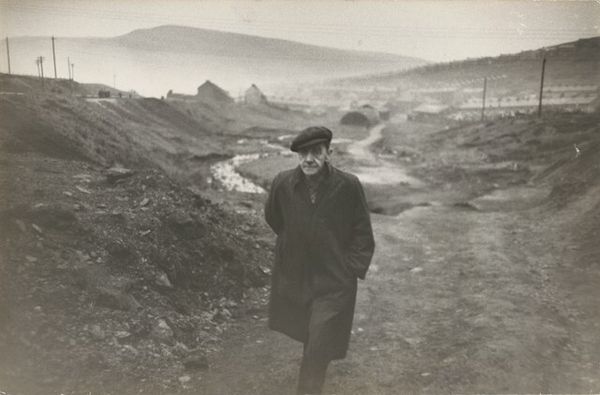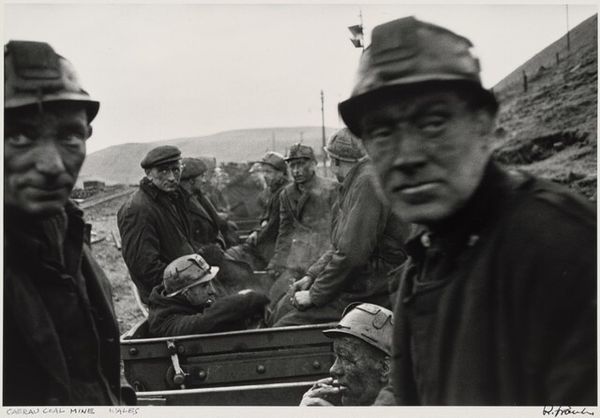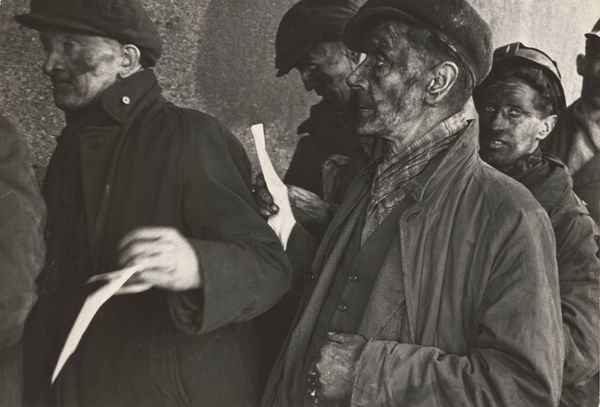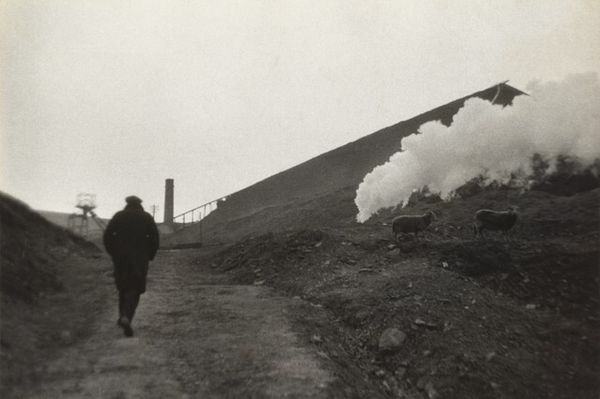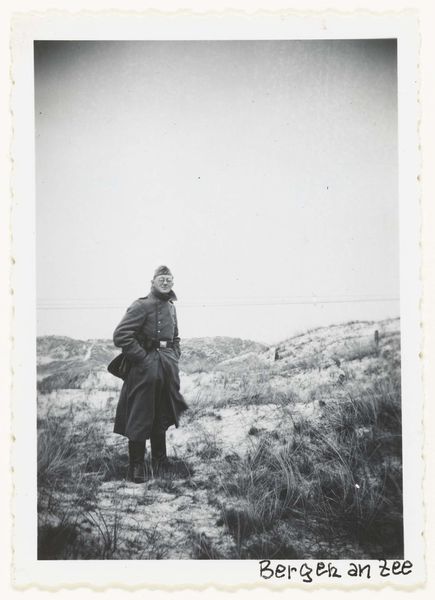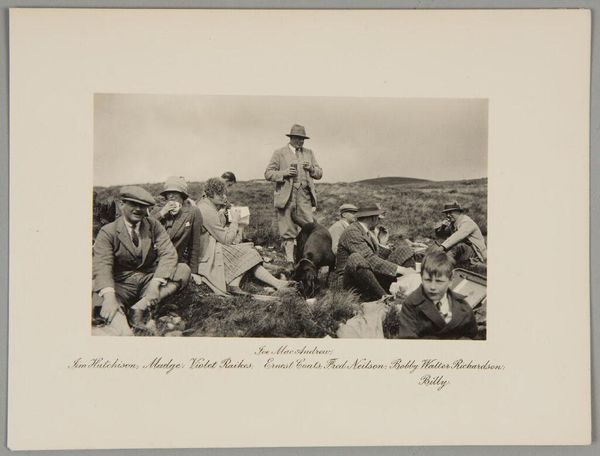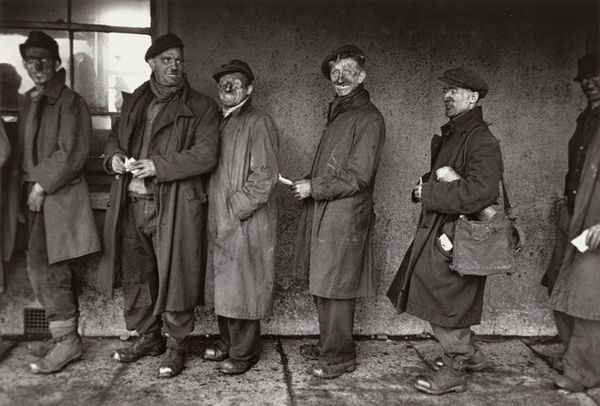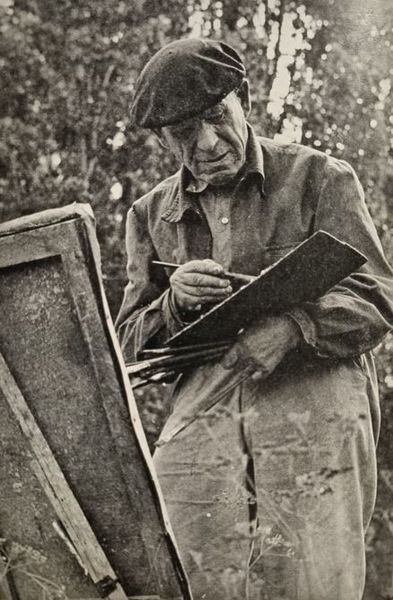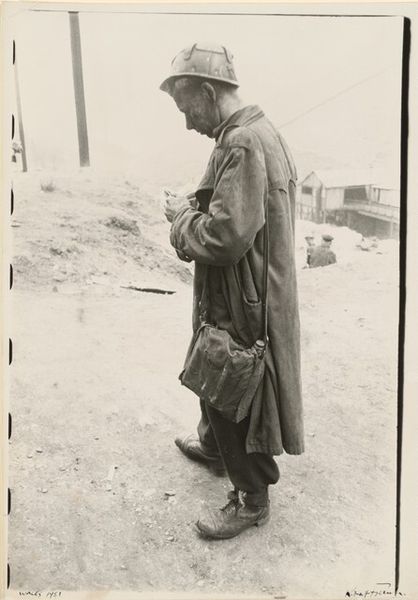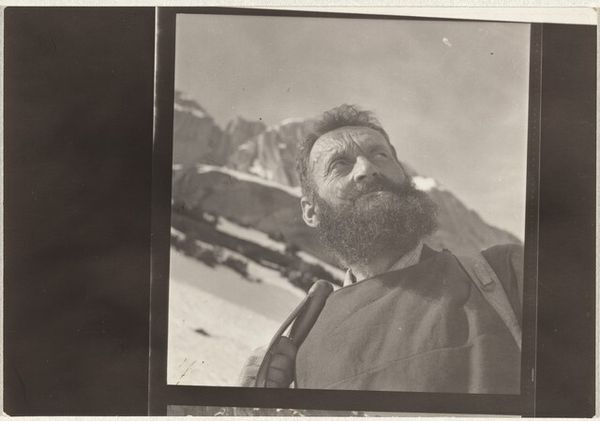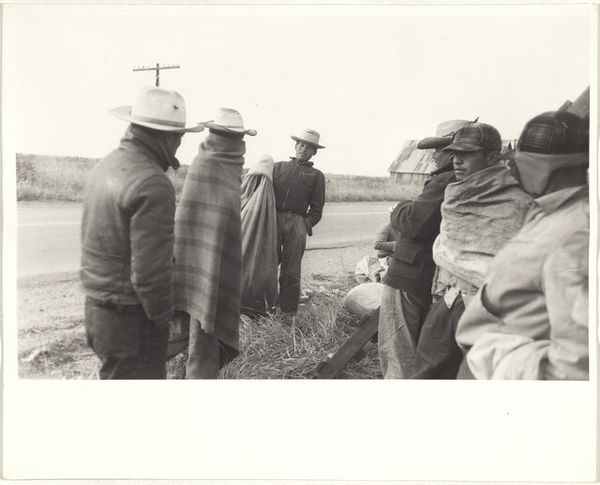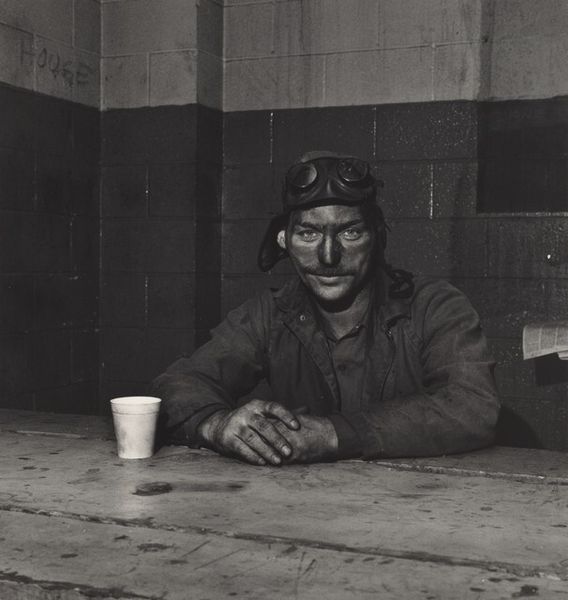
photography, gelatin-silver-print
#
black and white photography
#
landscape
#
outdoor photograph
#
black and white format
#
charcoal drawing
#
social-realism
#
photography
#
historical photography
#
black and white
#
gelatin-silver-print
#
monochrome photography
Dimensions: image: 22.5 × 34.4 cm (8 7/8 × 13 9/16 in.)
Copyright: National Gallery of Art: CC0 1.0
Curator: Standing before us, we have Robert Frank’s “Wales, Ben James” from 1953, a gelatin-silver print capturing a moment in Welsh landscape. What’s your initial take? Editor: Immediately, a somber dignity strikes me. The wind seems to whip through this image. The grays are heavy, almost like a charcoal drawing—it speaks of resilience. Is it just me, or does the texture alone narrate a long story of hardship? Curator: You pick up on the emotional texture wonderfully. Robert Frank, of course, aimed to present a reality often unseen or glossed over. It's an insightful composition that uses black and white to convey emotional depth. The subject, Ben James, isn’t posed. Editor: Exactly! It’s brutally candid. He’s presented honestly with that rough jacket, worn cap, and the group up the hill adds to it, some sort of gathering of folk. There’s an element of… community or shared labor hinted at. Knowing it was taken in Wales during a time of industrial change, one can almost feel the tightening grip of economic struggle. Curator: Precisely, Frank challenged the idealization often seen in photography, choosing to portray life with unvarnished honesty. And that raw presentation—his approach mirrors a larger theme he was trying to convey, I believe. His approach shows how these social circumstances are shaped by global economies and how labor has an undeniable mark upon its working class. Editor: Absolutely. Looking at those hands, gnarled, the worry etched on his face… it's a powerful symbol. Almost feels as though I'm looking straight into his eyes. What grips me most is the lack of flourish. There’s no performance. It’s life raw, simple as possible, which creates an almost confrontational beauty. Curator: It's almost like witnessing a stark social document; a powerful commentary on class, industry, and the individual’s place within that tapestry. I never fail to be touched. Editor: It feels as if the heart of 1950's Wales beats right here in front of me. A stunning look on history.
Comments
No comments
Be the first to comment and join the conversation on the ultimate creative platform.
